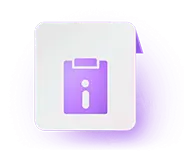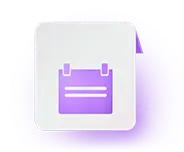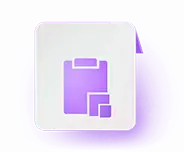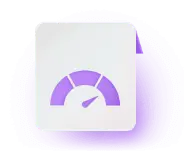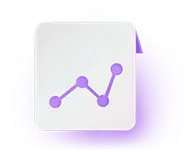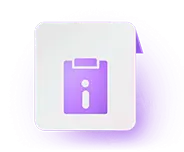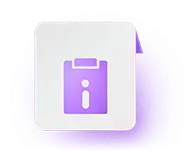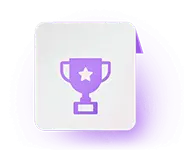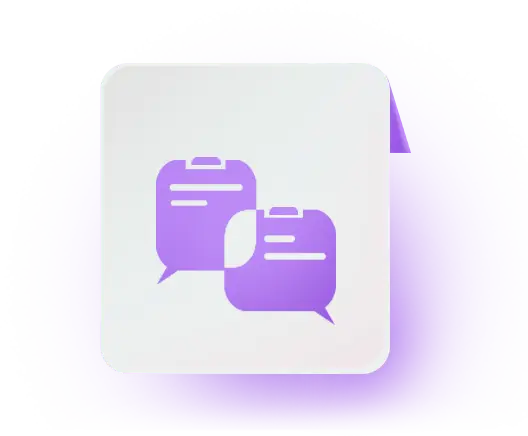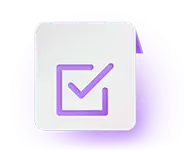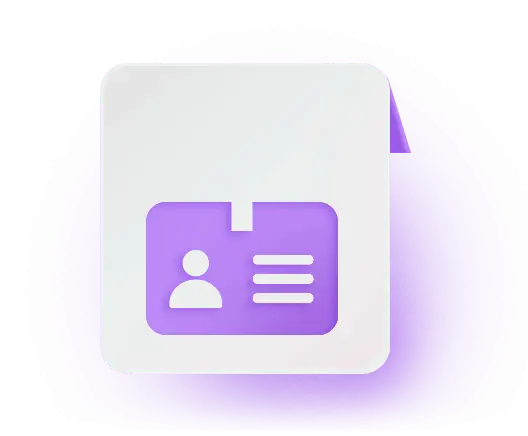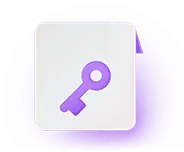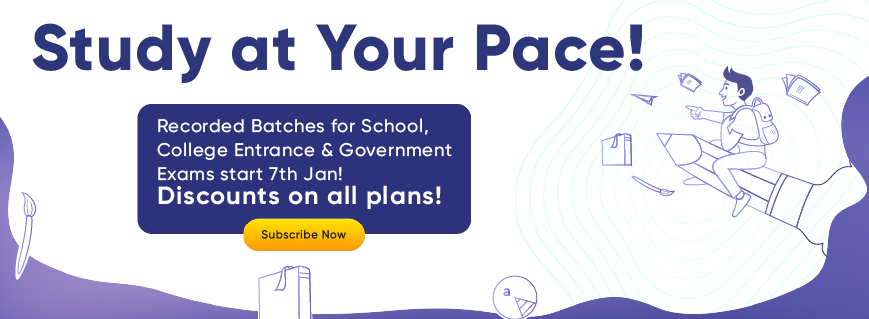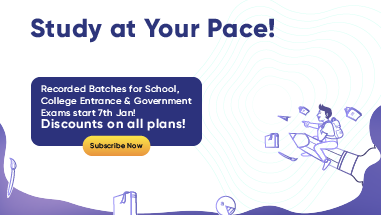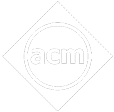- Written by aparna
- Last Modified on 14-12-2024
About Ladakh Board Class 12 Exam 2025
Ladakh School Education Department is affiliated with the Central Board of Secondary Education (CBSE). In accordance with the CBSE guidelines, the Board prescribes the NCERT books for its primary, secondary, and higher secondary classes. All schools affiliated to Ladakh Board have to follow the NCERT guidelines regarding the syllabus and curriculum. Students Ladakh Board Class 12 should be aware of all the points regarding board exam.
Ladakh Board Class 12 is an important stage in a student’s academic life. Thus, students should be proactive in their studies to clear the 12th class board exam with excellent marks. In this article, we have provided a subject-wise syllabus, exam preparation tips, a detailed study plan, and much more. Read on to learn more about the Ladakh Board Class 12 exam.
Ladakh Board Class 12 Exam Summary 2025
The Ladakh Board Class 12 exam is a state-level examination. Every year, nearly 10,000 students take the exam. The exam is conducted offline and the exam duration is for three hours. Exams are held as per the routine and guidelines issued by CBSE. Below is an overview of the Ladakh Board Class 12:
| Particulars |
Details |
| Name of the Exam |
Ladakh Board of Secondary Education Class 12 Board Examination |
| Conducting Body |
Central Board of Secondary Education (CBSE) |
| Mode of Registration |
Offline For Regular Students
Online for Private Students |
| Registration Fees |
Registration fees for the online application is not yet decided. |
| Class 12 Academic Subjects |
Mathematics
Biology
Physics
Chemistry
Computer Studies
Social Studies, Economics, Accountancy
Political science. |
| Frequency of Exam |
Yearly |
| Mode of Application |
Offline and Online |
| Mode of Payment |
Credit/ Debit Card/ NEFT |
Ladakh Board Official Website
http://dse.ladakh.gov.in/
Ladakh Board Class 12 Latest Update
- The Class 12 Ladakh Board exam is being conducted from February 15 to April 4, 2025.
Ladakh Board Class 12 Application Process 2025
The Ladakh Board Class 12 registration process is generally conducted in November. Ladakh Board conducts a separate registration process for regular, private students and repeaters. Candidates must visit the board’s official website to submit the HSC exam registration form for the academic year 2025. Important documents required for the registration are as follows:
- Aadhaar card
- Scanned copy of the photograph
- Scanned copy of the signature
- Specially abled students must show a certificate stating their disability. The disability certificate must be obtained from authorised doctors and hospital.
- Candidates should keep a copy of the application form signed and stamped by the school authority.
Steps to Register for Ladakh Board Class 12 Exam
Below are the steps to register for the Ladakh Board Class 12 exam:
- 1st Step: Visit the official website of Ladakh Board at dse.ladakh.gov.in
- 2nd Step: Go to the latest notifications section. Click on ‘Ladakh Board Application Form’.
- 3rd Step: The PDF of the Application Form will be displayed on the screen. Take a printout of the application form.
- 4th Step: Fill in the details in the application form.
- 5th Step: Submit the application form to the concerned authority.
Ladakh Board Class 12 Exam Pattern
Being aware of the exam pattern allows students to know how the papers are set. The Ladakh Board Class 12 exam is divided into two parts, practical and theoretical. Knowing the exam pattern can help students know the exam trend, types of questions, and difficulty level of the exam. Students should refer to the section below for the subject-wise exam pattern:
Ladakh Board Class 12 Maths Exam Pattern
The Ladakh Board Class 12 Maths exam pattern has five sections A, B, C, D and E. Students must attempt all the sections. Check the below table to know the Ladakh Board Class 12 exam pattern:
| Section |
Type of Question |
No. of Questions |
Marks |
| A |
Multiple Choice Questions |
20 |
1 |
| B |
Very Short Answer Questions |
5 |
2 |
| C |
Short Answer Questions |
6 |
3 |
| D |
Long Answer Questions |
4 |
5 |
| E |
Case Studies/Passage-based Questions |
3 |
4 |
Ladakh Board Class 12 Biology Exam Pattern
The exam pattern for Ladakh Board Class 12 also has five sections A, B, C, D, E. There are 33 questions in the question paper. Refer to the below table for a detailed exam pattern of Ladakh Board Class 12 Biology:
| Section |
Type of Question |
No. of Questions |
Marks |
| A |
Multiple Choice Questions |
16 |
1 |
| B |
Very Short Answer Questions |
5 |
2 |
| C |
Short Answer Questions |
7 |
3 |
| D |
Case Studies/ Passage-based Questions |
2 |
4 |
| E |
Long Answer Questions |
3 |
5 |
Ladakh Board Class 12 Physics Exam Pattern
Based on the CBSE guidelines, the Ladakh Board Class 12 Physics contains a total of five sections A, B, C, D and E and all the sections must be attempted. The exam pattern will help them know the marking scheme of each section. Refer to the table below for the Class 12 Physics Ladakh Board exam pattern:
| Section |
Type of Question |
No. of Questions |
Marks |
| A |
Multiple Choice Questions |
20 |
1 |
| B |
Very Short Answer Questions |
5 |
2 |
| C |
Short Answer Questions |
6 |
3 |
| D |
Long Answer Questions |
4 |
5 |
| E |
Case Studies/Passage-based Questions |
3 |
4 |
Ladakh Board Class 12 Chemistry Exam Pattern
The Chemistry question will also have 5 sections – A, B, C, D, and E. Students can get the number of questions, and the marking scheme for Chemistry from the exam pattern. The Ladakh Board Chemistry Class 12 can be noted down by the students from the table table.
| Section |
Type of Question |
No. of Questions |
Marks |
| A |
Multiple Choice Questions |
18 |
1 |
| B |
Very Short Answer Questions |
7 |
2 |
| C |
Short Answer Questions |
5 |
3 |
| D |
Long Answer Questions |
2 |
4 |
| E |
Case Studies/ Passage-based Questions |
3 |
5 |
Ladakh Board Class 12 Syllabus 2025
The Ladakh Board offers a minimum of 5 or more subjects to students in Class 11. Moreover, students need to continue the same subjects in Class 12 as well. Referring to the syllabus helps them study the right chapters and prepare for the exam effectively. They will know what chapters and topics are included and what to focus more on. Students can find the Ladakh Board Class 12 subject-wise syllabus in the following sections:
Ladakh Board Class 12 Syllabus for Physics
Now that students know the exam pattern, they should refer to the Ladakh Board Class 12 Physics syllabus before studying. Knowing the syllabus helps them create a proper study timetable to complete all the chapters on time. The table below provides the Ladakh Board Class 12 Physics syllabus.
| Chapter No. |
Chapter Name |
| 1 |
Electric Charges and Fields |
| 2 |
Electrostatic Potential and Capacitance |
| 3 |
Current Electricity |
| 4 |
Moving Charges and Magnetism |
| 5 |
Magnetism and Matter |
| 6 |
Electromagnetic Induction |
| 7 |
Alternating Current |
| 8 |
Electromagnetic Waves |
| 9 |
Ray Optics and Optical Instruments |
| 10 |
Wave Optics |
| 11 |
Dual Nature of Radiation and Matter |
| 12 |
Atoms |
| 13 |
Nuclei |
| 14 |
Semiconductor Electronics |
Ladakh Board Class 12 Syllabus for Chemistry
The Ladakh Board Class 12 Chemiatry syllabus for deals with physical, organic, and inorganic Chemistry. If students struggle to understand any concept, they can take the help of Embibe videos. Check the chapters covered in the Chemistry syllabus for Class 12:
| Chapter No. |
Chapter Name |
| 1 |
Solid State |
| 2 |
Solutions |
| 3 |
p-Block Elements |
| 4 |
Haloalkanes and Haloarenes |
| 5 |
Alcohols, Phenols and Ethers |
| 6 |
Biomolecules |
| 7 |
Electrochemistry |
| 8 |
Chemical Kinetics |
| 9 |
Surface Chemistry |
| 10 |
d-and f-Block Elements |
| 11 |
Coordination Compounds |
| 12 |
Aldehydes, Ketones and Carboxylic Acids |
| 13 |
Amines |
Ladakh Board Class 12 Syllabus for Mathematics
Class 12 Maths includes concepts that have real-life applications and are also required if students opt for engineering or Maths in their higher education. Therefore, they should study all the chapters and practice questions rigorously. The syllabus for Ladakh Board 12th Maths is as follows:
| Chapter No. |
Chapter Name |
| 1 |
Relations and Functions |
| 2 |
Inverse Trigonometric Function |
| 3 |
Matrices |
| 4 |
Determinants |
| 5 |
Continuity and Differentiability |
| 6 |
Applications of Derivatives |
| 7 |
Linear Programming |
| 8 |
Integrals |
| 9 |
Applications of the integrals |
| 10 |
Differential Equations |
| 11 |
Vectors |
| 12 |
Three-dimensional Geometry |
| 13 |
Probability |
Ladakh Board Class 12 Syllabus for Biology
Biology is a theoretical subject, but an interesting one. Students can watch the videos on Embibe to understand the concepts more effectively. This can help them relate the concepts to real-life scenarios in a better manner. The Ladakh Board Class 12 syllabus for Biology is provided in the table below:
| Chapter No. |
Chapter Name |
| 1 |
Reproduction in Organisms |
| 2 |
Sexual Reproduction in Flowering Plants |
| 3 |
Human Reproduction |
| 4 |
Reproductive Health |
| 5 |
Principles of Inheritance and Variation |
| 6 |
Molecular Basis of Inheritance |
| 7 |
Evolution |
| 8 |
Human Health and Diseases |
| 9 |
Strategies for Enhancement in Food Production |
| 10 |
Microbes in Human Welfare |
| 11 |
Biotechnology – Principles and Processes |
| 12 |
Biotechnology and its Application |
| 13 |
Organisms and Populations |
| 14 |
Ecosystem |
| 15 |
Biodiversity and its Conservation |
Ladakh Board Class 12 Syllabus for English
In Ladakh Board Class 12, students have to study English Literature, which consists of two textbooks namely Flamingo and Vistas. The Class 12 English syllabus help students understand English as a language better, and improve their reading and writing skills. They can find the Ladakh Board Class 12 syllabus for English below:
| Chapter No. |
Chapter Name |
| Flamingo – Prose |
| 1 |
The Last Lesson |
| 2 |
Lost Spring |
| 3 |
Deep Water |
| 4 |
The Rattrap |
| 5 |
Indigo |
| Poetry |
| 1 |
My Mother at Sixty Six |
| 2 |
An Elementary School Classroom in a Slum |
| 3 |
Keeping Quiet |
| 4 |
A Thing of Beauty |
| 5 |
Aunt Jennifer’s Tigers |
| Vistas |
| 1 |
The Third Level |
| 2 |
The Enemy |
| 3 |
Should the Wizard Hit Mommy? |
| 4 |
On the Face of It |
| 5 |
Evans Tries An O-Level |
| Grammar |
| 1 |
Reading Skills |
| 2 |
Writing Skills |
| 3 |
Assessment of Listening and Speaking Skills |
| 4 |
Project Work + Viva/ALS |
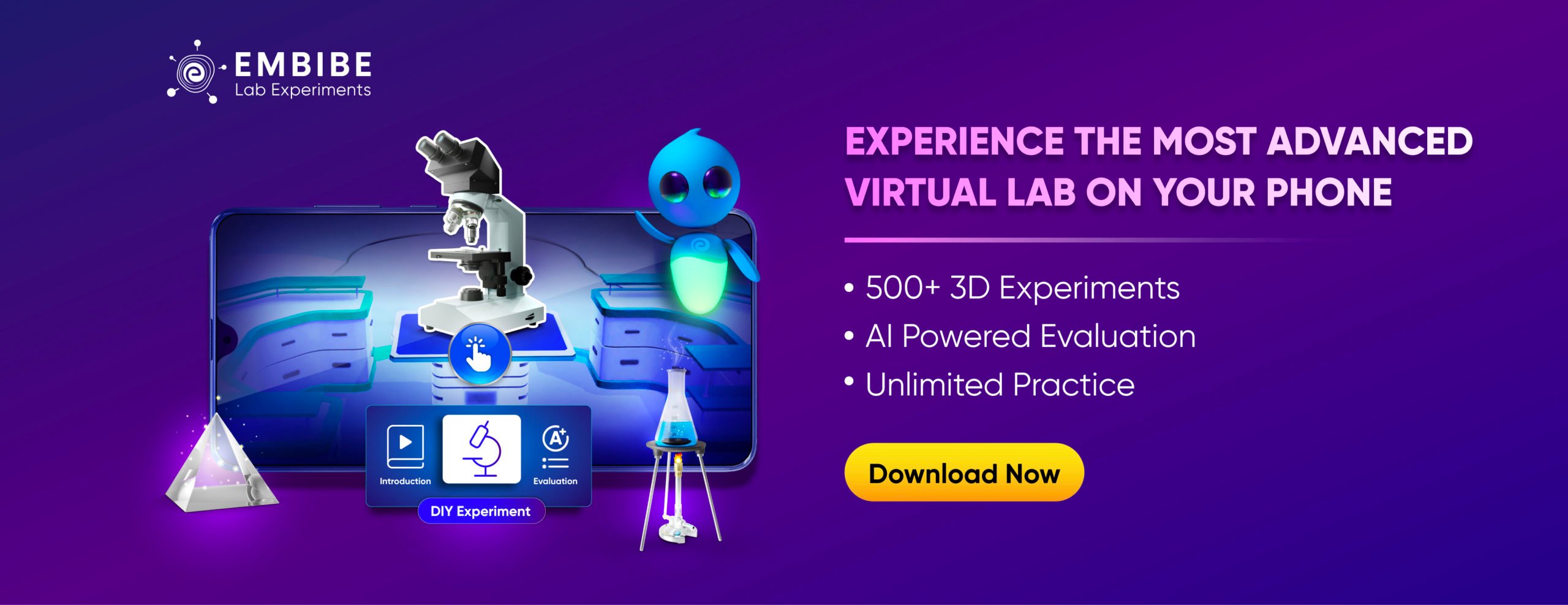
Ladakh Board Class 12 Syllabus: All Subjects PDFs
Students can check the complete Ladakh Class 12 syllabus of all subjects by clicking on the links provided below:
Biology Carnatic Melodic Accountancy Biotechnology
Ladakh Board Class 12 Blueprint
A blueprint is the allocation of marks to a chapter or a unit in the syllabus. Knowing subject-wise Ladakh Board Class 12 blueprint will help students design a study plan that best suits their preparation needs. In the section below, we have provided a subject-wise Ladakh Board 12th class blueprint. Refer to each of them and utilise the information.
Ladakh Board Class 12 Maths Blueprint
Students should prepare all the chapters thoroughly. However, knowing the exam pattern will help them prioritise the topics and create a relevant study plan. Check the marking scheme of Ladakh Board 12th Mathematics below:
| Units |
Marks Distribution |
| Relations and Functions |
08 |
| Algebra |
10 |
| Calculus |
35 |
| Linear Programming |
05 |
| Vectors and Three-Dimensional Geometry |
14 |
| Probability |
08 |
Ladakh Board Class 12 Physics Blueprint
Having the Ladakh Board Class 12 Physics blueprint handy will be beneficial for students. It can act as a guide to strategise the exam study routine. Check the table below for the Physics blueprint for Ladakh Board 12th class.
| Unit |
Chapter |
Marks Distribution |
| Unit 1 – Electrostatics |
Chapter–1: Electric Charges and Fields |
16 |
| Chapter–2: Electrostatic Potential and Capacitance |
| Unit 2 – Current Electricity |
Chapter -3: Current Electricity |
| Unit 3 – Magnetic Effects of Current and Magnetism |
Chapter–4: Moving Charges and Magnetism |
17 |
| Chapter–5: Magnetism and Matter |
| Unit 4 – Electromagnetic Induction and Alternating Currents |
Chapter–6: Electromagnetic Induction |
| Chapter–7: Alternating Current |
| Unit 5 – Electromagnetic Waves |
Chapter–8: Electromagnetic Waves |
18 |
| Unit 6 – Optics |
Chapter–9: Ray Optics and Optical Instruments |
| Chapter–10: Wave Optics |
| Unit 7 – Dual Nature of Radiation and Matter |
Chapter–11: Dual Nature of Radiation and Matter |
12 |
| Unit 8 – Atoms and Nuclei |
Chapter–12: Atoms |
| Chapter–13: Nuclei |
| Unit 9 – Electronic Devices |
Chapter–14: Semiconductor Electronics |
7 |
| Total |
70 |
Ladakh Board Class 12 Chemistry Blueprint
Students should be aware of the weightage of each chapter in Chemistry. It will help them set specific goals to meet study requirements. They can refer to the Ladakh Board Class 12 Chemistry blueprint in the table below:
| Unit |
Unit Name |
Marks Distribution |
| 1 |
Solutions |
7 |
| 2 |
Electrochemistry |
9 |
| 3 |
Chemical Kinetics |
7 |
| 4 |
d -and f -Block Elements |
7 |
| 5 |
Coordination Compounds |
7 |
| 6 |
Haloalkanes and Haloarenes |
6 |
| 7 |
Alcohols, Phenols and Ethers |
6 |
| 8 |
Aldehydes, Ketones and Carboxylic Acids |
8 |
| 9 |
Amines |
6 |
| 10 |
Biomolecules |
7 |
Ladakh Board Class 12 Biology Blueprint
Biology is an important subject for students who want to continue their careers in the same stream. Thus knowing the unit with high marks weightage will enable them to allocate time judiciously and cover the entire syllabus. Here is the Ladakh Board Class 12 Biology blueprint:
| Unit |
Unit Name |
Marks Distribution |
| 1. |
Reproduction |
16 |
| 2. |
Genetics and Evolution |
20 |
| 3. |
Biology and Human Welfare |
12 |
| 4. |
Biotechnology and its Applications |
12 |
| 5. |
Ecology and Environment |
10 |
| Total |
70 |
Ladakh Board Class 12 Exam Date 2025
The Ladakh Board Class 12 Exam 2025 started on February 15, 2025 and will conclude on April 4, 2025. Knowing the exam dates can help students prepare for the exam in a better manner. Students can refer to the tentative timetable for Ladakh Board Class 12 exam in the table below:
| Dates |
Subjects |
|
February 15, 2025
|
Entrepreneurship
|
|
February 16, 2025
|
Biotechnology, Engineering Graphics, Electronics Technology, Shorthand (English and Hindi), Food Nutrition & Dietetics, Library & Information Science
|
|
February 17, 2025
|
Kathak, Bharatanatyam, Kuchipudi, Odissi, Maniupuri, Kathakali, Banking, Horticulture
|
|
February 20, 2025
|
Hindi Elective and Core
|
|
February 21, 2025
|
Food Production, Office Procedure and Practices, Design, Data Science
|
|
February 22, 2025
|
Early Childhood Care, Artificial Intelligence
|
|
February 23, 2025
|
Hindustani Music Voc, Hindustani Music Mel Ins, Automotive, Healthcare, Cost Accounting
|
|
February 24, 2025
|
English Elective and Core
|
|
February 25, 2025
|
Beauty, Wellness, Russian, Marketing
|
|
February 27, 2025
|
Retail, Agriculture, multimedia
|
|
February 28, 2025
|
Chemistry
|
|
March 1, 2025
|
Bengali, Financial Markets Management, Typography, Medical Diagnostics, Textile Design
|
|
March 2, 2025
|
Geography
|
|
March 3, 2025
|
Yoga
|
|
March 4, 2025
|
Hindustani Music Vocal
|
|
March 6, 2025
|
Physics
|
|
March 9, 2025
|
Legal Studies
|
|
March 10, 2025
|
Punjabi, Tamil, Telugu, Sindhi, Marathi, Gujarati, Marathi, Manipuri, Malayalam, Odia, Assamese, Kannada, Arabic, Tibetan, French, German, Persian, Nepali, Limbo, Lepcha, Telugu Telangana, Bodo, Tangkhul, Japanese, Bhutia, Spanish, Kashmiri, Mizo, Sanskrit core
|
|
March 11, 2025
|
Mathematics, Applied Mathematics
|
|
March 13, 2025
|
Physical Education
|
|
March 14, 2025
|
Fashion Studies
|
|
March 16, 2025
|
Biology
|
|
March 17, 2025
|
Economics
|
|
March 18, 2025
|
Painting, Graphics, Sculpture, Applied Art (commercial art)
|
|
March 20, 2025
|
Political Science
|
|
March 21, 2025
|
NCS, Information Technology
|
|
March 22, 2025
|
Tourism, Air-conditioning & Refrigeration
|
|
March 23, 2025
|
Information Practices, Computer Science
|
|
March 25, 2025
|
Business Studies, Business Administration
|
|
March 27, 2025
|
Urdu Elective, Sanskrit Elective, Carnatic music vocal, Knowledge tradition & practices of India, Urdu core, Front office operations, insurance, Geospatial Technology, Electrical Technology, Taxation, Mass Media Studies
|
|
March 28, 2025
|
Web Application
|
|
March 29, 2025
|
History
|
|
March 31, 2025
|
Accountancy
|
|
April 1, 2025
|
Home Science
|
|
April 3, 2025
|
Sociology
|
|
April 4, 2025
|
Psychology
|
Ladakh Board Class 12 Admit Card 2025
The Ladakh School Education Department usually releases the Ladakh Board Class 12 exam admit cards at least two weeks before the exam. The HSC hall ticket 2025 is made available on the board’s official website. The school authorities will be able to download the Ladakh Board HSC hall ticket 2025 by entering the username and password. Students will have to collect their admit cards from their respective school authorities. They must carry the admit card every day to their exam center whenever they sit for the exam.
Ladakh Board Class 12 Study Plan to Maximise Score
A comprehensive study plan is a must to score maximum marks in the Ladakh Board Class 12 exam. Studying all year without a plan is like driving without direction because students will not arrive anywhere. To ace the Class 12 board exam with good scores, you must maintain a consistent study schedule. So, when you need assistance with your Ladakh Board Class 12 Board exam preparation, you can refer to the points listed below.
Ladakh Board Class 12 Preparation Tips
The preparation tips enhance the level of preparation of students. Besides rigorous studies they can implement these tips to score better marks. They can refer to the preparation tips for the Ladakh Board Class 12 exam below:
- Know the Syllabus: Students should be aware of their Ladakh Board Class 12 syllabus. It is necessary so that students do not end up reading unnecessary topics.
- Solve Practice Questions: Students should practice questions so that they can remember the formulas, definitions, diagrams, etc. It will also help them revise the topics when the exams are nearing.
- Make Own Notes: Students should always note important points on each topic while studying. It will come in handy during revision.
- Solve Previous Years’ Question Papers: Students should solve as many Ladakh Board Class 12 previous years’ question papers as they can find. It will be beneficial to know what kind of questions are asked in the exam and how to answer them effectively.
Ladakh Board Class 12 Detailed Study Plan
A detailed study plan for Ladakh Board Class 12 includes an idea on how a student will prepare for each subject. Each subject is different from another and thus the approach to study is also unique. Refer to the below points for a brief idea of designing a study plan:
- Mathematics – Make separate notes for formulas, derivations, and theorems. Write an illustration for each topic. Students should solve sample problems for all chapter topics and work on the weak areas. They can solve sample problems and take mock tests on the Embibe app for to further enhance their conceptual knowledge.
- Chemistry – Questions in organic and inorganic chemistry are fact-based, and students can score full marks in each question with ample practice. Students should also pay attention to balancing chemical equations as they carry high marks.
- Physics – Understand each law, principle and idea. If students cannot grasp certain concepts, they can refer to Embibe videos for help. Physics includes diagrams of the flow of charge, kinetic energy, etc. Practising these diagrams with correct labelling is also necessary.
- Biology- To score maximum marks in Ladakh Board Class 12 Biology, students must write to the point, comprehensive answers with supporting diagrams wherever needed. Since Biology is a theoretical subject, the best way to fetch marks in writing succinct answers.
Ladakh Board Class 12 Result 2025
The Ladakh Board Class 12 exam 2025 will be started. The results will be declared nearly a month after the exam concludes. The Department of School Education, Ladakh, will declare the results on its official website. Students should note that the result declared online is provisional, and they should collect their original marksheet from their respective schools/colleges.
To know the Ladakh Board Class 12 result, students can follow the below procedure.
- 1st Step: Visit the official website at dse.ladakh.gov.in.
- 2nd Step: Click on Class 12 2025 result link.
- 3rd Step: A login screen will open with the Class 12 result.
- 4th Step: Enter the roll number/ name as mentioned on the Ladakh Board Class 12 admit card.
- 6th Step: Click on Submit.
- 7th Step: The Ladakh Board Class 12 result will be displayed on the screen.
- 8th Step: Students are advised to download the result for future reference.
Ladakh Board Class 12 Topper’s List 2025
The Department of School Education, Ladakh, will declare the names of the Ladakh Board Class 12 toppers 2025 once the results are officially declared. Students can look at the previous year’s toppers to understand how high the competition was and how did the students fare in the exam. Students can refer to the list of 2021 toppers:
| Stream |
Student’s Name |
School Name |
Percentage |
| Science |
Aryaveer Singh |
Shishu Niketan Higher Secondary School, Samba |
99.2% |
| Science |
Liza Sharma |
S.P Hr. Secondary School, Bari Brahmana |
99.2% |
| Commerce |
Sourav Chowdhary |
Shiksha Niketan Hr. Sec. School Jeevan Nagar, Jammu |
99.2% |
| Home Science |
Srishti Sharma |
GGHSS Mubarak Mandi, Jammu |
96.6% |
| Arts |
Meenakshi Gupta |
ShikshaNiketen Hr. Sec. School Jeevan Nagar, Jammu |
99.2% |
Ladakh Board Class 12 Supplementary Exam 2025
The Ladakh Board conducts the Class 12 supplementary exam for the students who fail to pass one or more subjects, in order to clear the Class 12 board exam. Students who pass the supplementary exams will be able to continue their studies, while those who fail will have to retake the exams in the next session.

FAQs on Ladakh Board Class 12 Exam 2025
Students can check the below frequently asked questions about the Ladakh Board Class 12 exam:
Q: Where can I find mock tests for the Ladakh Board Class 12 Exam?
Ans: Students can access Ladakh Board Class 12 mock tests and practice questions and mock tests on Embibe. They can also customise the practice and mock tests as per their preference.
Q: How many practice questions are there for Ladakh Board Class 12 Physics on Embibe?
Ans: There are 1000+ Physics practice questions on Embibe for Ladakh Board Class 12.
Q: What are the advantages of studying for Ladakh Board Class 12 from Embibe?
Ans: Embibe provides a wide variety of study material for the Ladakh Board Class 12 exam, for. Students can learn the topics from scratch with our 3D videos, solve hundreds of sample questions and take mock tests for any topic, chapter, or subject.
Q: Where can I find the Ladakh Board Class 12 syllabus?
Ans: Students can find the Ladakh Board Class 12 syllabus on this page.
Q: Does Ladakh Board follow NCERT books for Class 12?
Ans: Yes, the Ladakh Board follows the NCERT books for Class 12.
List of Educational Institutions for Ladakh Board Class 12
A good school inculcates values and morals in children from the beginning. A student develops empathy, respect, compassion, integrity and responsibility from the school. By the time a student graduates from high school, they will have developed their own set of values and principles. Hence, choosing a good school with a good environment in all aspects is very important. We have given a list of the best government and private schools for Ladakh Board Class 12 in the following table.
| Sl.No. |
School Name and Address |
| 1 |
Govt. Higher Secondary School Turtuk. |
| 2 |
Govt. Higher Secondary School Bogdang (Nubra). |
| 3 |
Govt. Higher Secondary School Diskit (Nubra) |
| 4 |
Govt. Higher Secondary School Girls Leh. |
| 5 |
Govt. Higher Secondary School Boys Leh. |
| 6 |
Govt. Higher Secondary School Chuchot Shama. |
| 7 |
Govt. Higher Secondary School Sakti. |
| 8 |
Govt. Higher Secondary School Tangtse. |
| 9 |
Govt. Higher Secondary School Nyoma. |
| 10 |
Govt. Higher Secondary School Saspol. |
| 11 |
Govt. Higher Secondary School Temisgam. |
| 12 |
Govt. Higher Secondary School Khaltsi. |
| 13 |
Govt. Higher Secondary School Skurbuchan. |
| 14 |
Govt. High School Hunder (Nubra). |
| 15 |
Govt. High School Sumoor (Nubra). |
| 16 |
Govt. High School Panamik (Nubra) |
| 17 |
Govt. High School Chushut (Changthang). |
| 18 |
Govt. High School Chumathang. |
List of Future Exams After Ladakh Board Class 12
Class 12 exams are the qualifying criteria for most of the entrance exams taking place for admission to professional courses and other undergraduate programmes. Below is the list of future exams that a student can appear for after passing the Ladakh Board Class 12.
| Stream |
Exam |
| Engineering |
Joint Entrance Examination (JEE) Main
JEE Advanced
Birla Institute of Technology and Science Admission Test (BITSAT) entrance exam
COMED-K
IPU-CET (B. Tech)
Manipal (B. Tech)
VITEEE
AMU (B. Tech)
NDA Entrance with PCM (MPC) |
| Medical |
National Eligibility Cum Entrance Test (NEET) |
| Defence Services |
Indian Maritime University Common Entrance Test
Indian Navy B.Tech Entry Scheme
Indian Army Technical Entry Scheme (TES)
National Defence Academy and Naval Academy Examination (I) |
| Fashion and Design |
National Institute of Fashion Technology (NIFT) Entrance Test
National Institute of Design Admissions
All India Entrance Examination for Design (AIEED)
Symbiosis Institute of Design Exam
Footwear Design and Development Institute
Maeer’s MIT Institute of Design
National Institute of Fashion Design
National Aptitude Test in Architecture
Center for Environmental Planning and Technology (CEPT) |
| Social Sciences |
Banaras Hindu University
IIT Madras Humanities and Social Sciences Entrance Examination (HSEE)
TISS Bachelors Admission Test (TISS-BAT) |
| Law |
Common-Law Admission Test
All India Law Entrance Test (AILET) |
| Science |
National Entrance Screening Test (NEST) |
| Mathematics |
Indian Statistical Institute Admission
Admissions to Universities
Various B.Sc Programs
Banasthali Vidyapith Admission |









